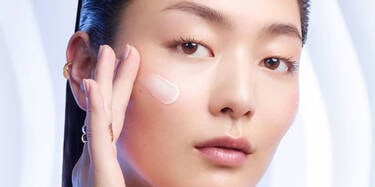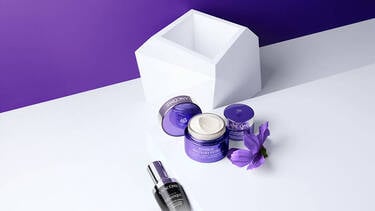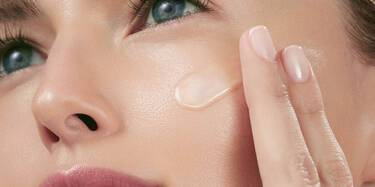The Ultimate Guide On How To Apply Sunscreen On Face: 7 Expert Tips for Maximum Protection

Sunscreen is one of the most essential products in any skincare routine. It protects your skin from harmful UV rays, prevents premature ageing, and reduces the risk of skin cancer. However, to truly reap the benefits of sunscreen, you need to apply it correctly. In this blog, we'll walk you through a step-by-step guide on how to apply sunscreen on your face, along with expert tips to ensure your skin is fully protected. Whether you're heading to the beach or simply running errands, following these tips will help keep your skin safe and radiant.
How To Apply Sunscreen On The Face?
Applying sunscreen might seem straightforward, but there are a few key steps and tips that can make a big difference in its effectiveness. Let’s dive into the essential tips for applying sunscreen the right way:
-
Tip 1: Double Cleanse Your Face
Before applying sunscreen, it's important to start with a clean canvas. Double cleansing your face ensures that you
remove any makeup, excess oils, dirt, or pollutants that could interfere with the effectiveness of the sunscreen.
Step 1: Start with an oil-based cleanser to remove any
makeup products and impurities from the surface of your skin.
Step 2: Follow up with a water-based cleanser to get rid of any remaining residue and deep clean your pores.
Double cleansing will not only give you a fresh base for sunscreen but will also help prevent clogged pores and
breakouts, especially if you're wearing sunscreen on top of makeup.
-
Tip 2: Moisturise
Sunscreen should be applied after you've moisturised your face. A good moisturiser helps keep your skin hydrated,
which is essential for maintaining a healthy skin barrier. Applying sunscreen on well-hydrated skin also ensures it
goes on smoothly and doesn't leave a patchy finish.
If you have oily or combination skin, choose a lightweight, oil-free moisturiser. For dry skin types, opt for a rich
cream that locks in moisture. Remember, moisturising is a crucial step, as sunscreen alone cannot provide enough
hydration, especially for dry skin types.
-
Tip 3: Choose A Sunscreen With SPF 50 PA++++
When selecting a sunscreen, opt for one with SPF 50 PA++++. The SPF (Sun Protection Factor) number tells you how
well the sunscreen protects against UVB rays, while the PA rating measures the protection from UVA rays.
SPF 50: Offers high protection from UVB rays, which are responsible for causing sunburn
PA++++: Provides excellent protection against UVA rays, which contribute to skin ageing and long-term damage
A broad-spectrum sunscreen like this shields your skin
from both types of harmful rays, giving you maximum
protection.
-
Tip 4: Consider Filters & Not Just SPF
While SPF is important, it’s equally crucial to pay attention to the types of filters your sunscreen contains. Sunscreens typically use two types of filters: chemical and physical. When choosing a sunscreen, look for one that suits your skin type and preferences. If you have sensitive or acne-prone skin, physical sunscreens may be the better option, while chemical sunscreens are perfect for a lightweight, seamless finish.
-
Tip 5: Apply The Right Amount
One of the most common mistakes people make is not applying enough sunscreen. To get the full benefit of your
sunscreen, it’s essential to use the right amount. Here’s a simple guideline on how much sunscreen to apply on the
face:
Use a coin-sized amount of sunscreen, which is roughly the equivalent of one to two fingers' worth of product.
Overapplying may make your face look greasy and underapplying sunscreen reduces its effectiveness and leaves parts
of your skin exposed to harmful rays, so be generous with your application.
-
Tip 6: Mind the Application Process
Applying sunscreen correctly is just as important as using the right amount. Here’s how to ensure even coverage and
maximum protection:
Apply Around the Eyes: The skin around your eyes is thin and delicate, making it prone to sun damage. Be sure
to
apply SPF around your eyes, including your eyelids and under-eye area. Use a gentle, fragrance-free formula to avoid
irritation.
Cover All Exposed Areas: Don’t forget areas like your ears, neck, and the back of your hands. These spots are
often
neglected but can be just as susceptible to sun damage.
Pat, Don’t Rub: Instead of rubbing sunscreen into your skin, gently pat it in. This helps ensure even
coverage
without disturbing the layers of skincare products you’ve applied underneath.
Apply Before Going Out: Sunscreen needs time to absorb and create a protective barrier on your skin. Make
sure you
apply it at least 15-30 minutes before stepping outside for optimal protection.
-
Tip 7: Reapply Every Two Hours
Sunscreen doesn’t last all day, especially if you're sweating, swimming, or spending long hours outside. To maintain
protection, it's crucial to reapply SPF every two to four hours.
Sunscreen is an essential step in any skincare routine, but it’s not enough to simply apply it once and forget about
it. By following the above-mentioned tips on how to apply sunscreen on your face, you can ensure your skin stays
protected and healthy all year round. Sunscreen is your best defence against sun damage, premature ageing, and skin
cancer, so make sure you're using it correctly and consistently for maximum benefits. You can also browse through a
wide range of other Lancôme skincare products and explore the skincare beauty magazine to keep your skin looking and
feeling at its best.
FAQs
1. Which goes first, sunscreen or moisturiser?
The moisturiser should be applied before sunscreen. First, hydrate and nourish your skin with moisturiser, allowing it to absorb fully. Then, apply sunscreen as the final step to create a protective barrier against UV rays. Sunscreen should always be the last part of your skincare routine.
2. Is it okay to apply sunscreen directly?
Yes, it's okay to apply sunscreen directly to your skin, but it's best to apply it over a moisturiser for added hydration and protection. Ensure your skin is clean and dry before application. Always apply sunscreen generously and evenly for optimal UV protection.
3. How to apply sunscreen with makeup?
To apply sunscreen with makeup, first, apply sunscreen after your skincare routine, allowing it to fully absorb. Then, proceed with your makeup.
4. Should I apply sunscreen daily?
Yes, you should apply sunscreen daily, even on cloudy days or when staying indoors. UV rays can penetrate through clouds and windows, causing skin damage over time. Using sunscreen daily helps protect against premature ageing, sunburn, and the risk of skin cancer.
5. Will the sunscreen make my skin feel sticky?
No, the UV Expert Aqua Gel SPF 50 PA++++ UVA UVB Sunscreen won’t make your skin feel sticky. Its lightweight, breathable formula absorbs quickly, leaving your skin feeling fresh and comfortable while providing effective sun protection. This product is perfect for daily use without the heavy or greasy feel!
















